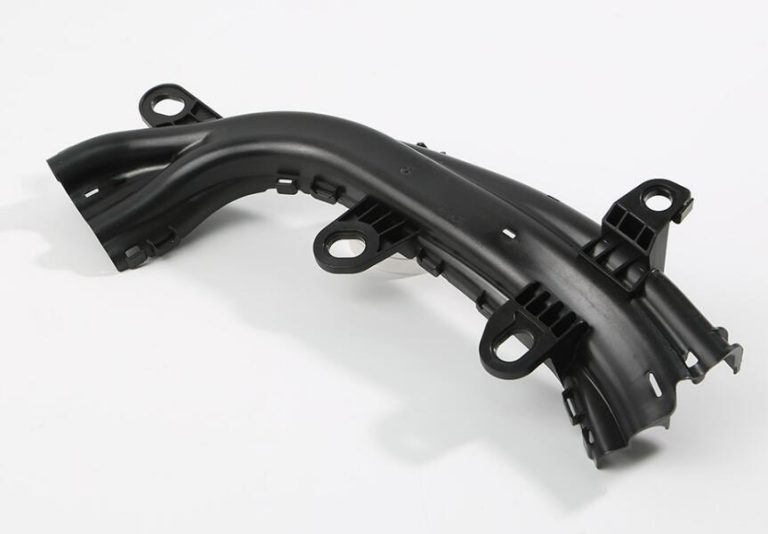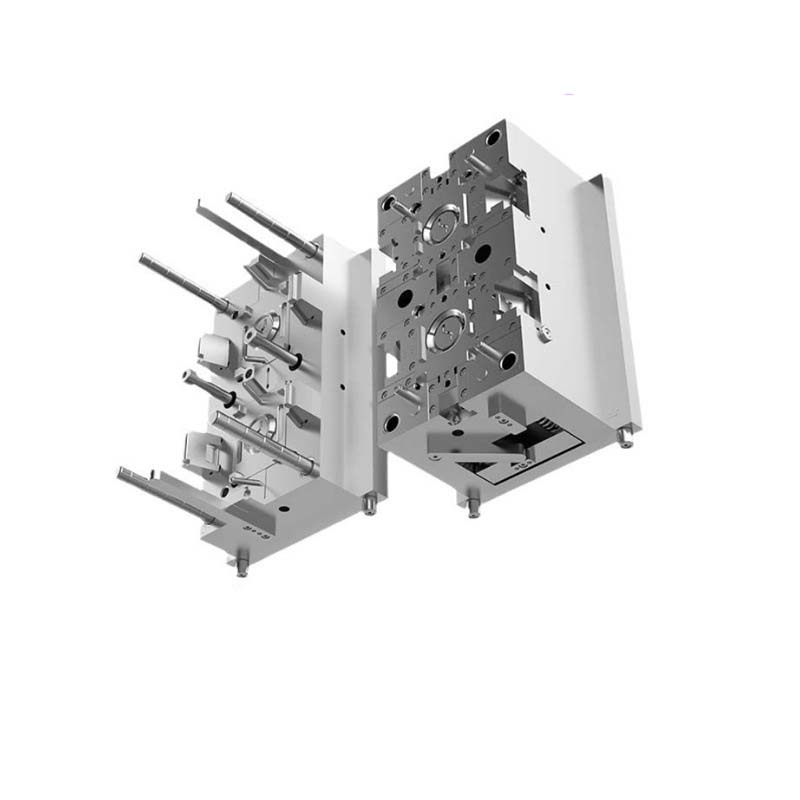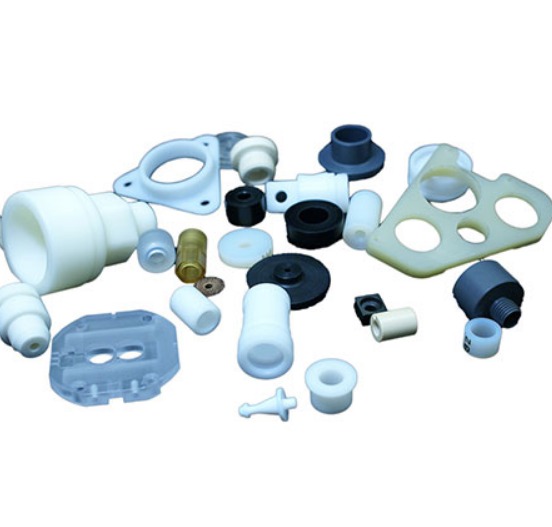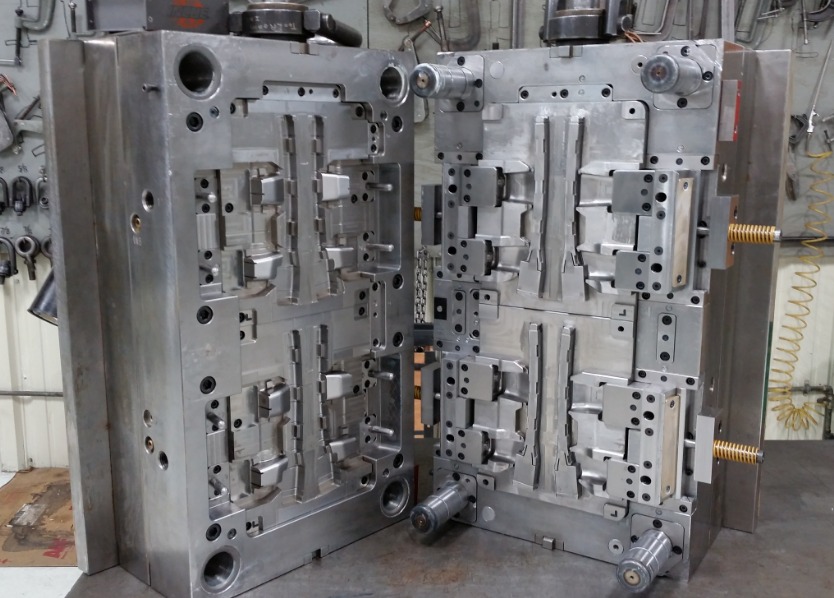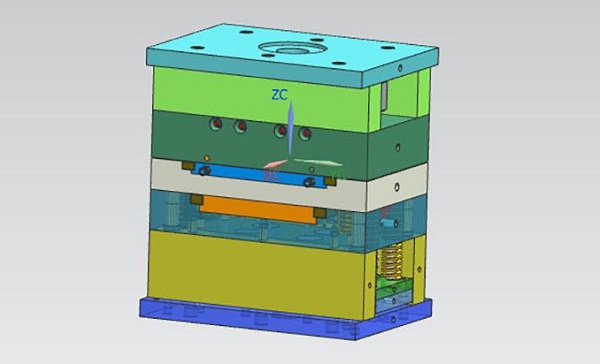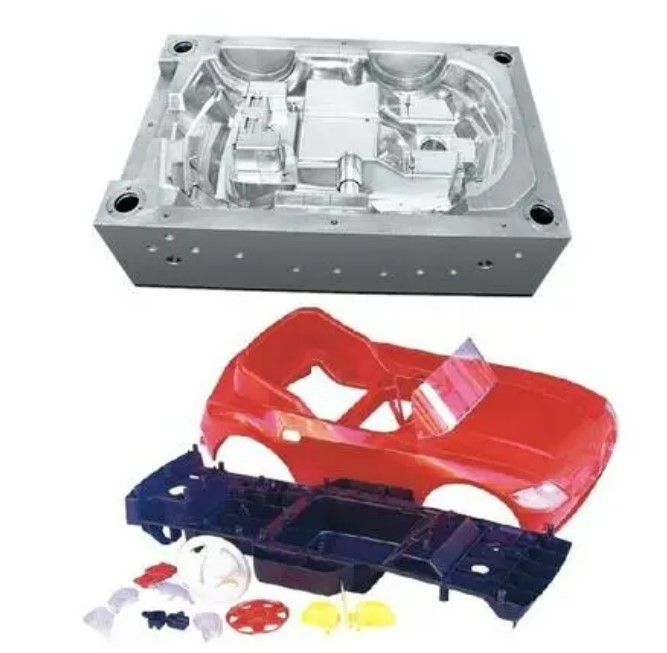Introduction
Are you struggling to purchase the right plastic mold? You're not alone. The process of choosing the appropriate plastic mold can be a daunting task, especially with the wide variety of options available in the market. There are countless questions that might cross your mind: What material should the mold be made of? How precise should the dimensions be? How much should you budget for it?
In fact, according to a recent industry survey, over 70% of buyers faced difficulties in selecting the perfect plastic mold for their projects. This could lead to inefficiencies, cost overruns, and even project failures. But worry not! There are six important factors that you need to consider to make the right purchase. This article is here to guide you through these factors, helping you solve the puzzle of plastic mold procurement and make a well - informed decision that meets your project requirements.
Factor 1: Quality of Materials
Material Types and Their Significance
The material of a plastic mold is the cornerstone of its performance. The most commonly used materials for plastic molds are various types of steel, each with its unique characteristics. For example, P20 steel is a popular choice for its good machinability and relatively low cost. It has a hardness of around 28 - 32 HRC, making it suitable for general - purpose plastic molds with a lifespan requirement of approximately 300,000 shots. It is often used in the production of toys and simple household plastic products.
On the other hand, 718 steel offers higher strength and better polishing performance compared to P20. With a hardness of 32 - 36 HRC, it can be used for more complex mold structures and products with higher surface quality requirements, such as some small - scale electronic product housings. The cost of 718 steel is slightly higher than P20, but its performance advantages can meet the needs of more high - end applications.
For molds that require high - temperature resistance, H13 steel comes into play. It has excellent heat - resistance and good toughness, maintaining stable performance at high temperatures. H13 steel is often used in the production of molds for engineering plastics like PC (Polycarbonate) and PA (Polyamide). A case in point is in the automotive industry, where components made from high - temperature - resistant plastics are produced using H13 - made molds.
The choice of material directly impacts the mold's quality, lifespan, and cost. High - quality materials can significantly extend the mold's lifespan. For instance, a mold made of ordinary steel might last for 50,000 - 100,000 production cycles, while a mold made of high - grade alloy steel can endure 500,000 - 1,000,000 cycles or even more, depending on the specific application and operating conditions. Although high - grade materials are more expensive upfront, they can save costs in the long run by reducing the frequency of mold replacement and improving production efficiency.
Importance of Material Quality Certification
Material quality certification is crucial when purchasing a plastic mold. Certifications serve as an assurance of the material's quality and compliance with certain standards. For example, the ISO 9001 certification is widely recognized globally. It ensures that the manufacturer has a quality management system in place during the production of the mold material, from raw material procurement to the final product. Another important standard is ASTM (American Society for Testing and Materials) standards for steel. ASTM A29/A29M, for instance, sets the requirements for general - requirements for steel bars, wire, and shapes for mechanical and allied applications.
When a mold material has these certifications, it means that the material has undergone strict testing. For example, in the case of steel for plastic molds, tests are conducted on its chemical composition to ensure that the ratios of elements like carbon, chromium, and nickel are within the specified range. Physical property tests, such as hardness, tensile strength, and impact resistance, are also carried out.
To verify the authenticity of these certifications, you can contact the issuing authority directly. Most certification bodies have official websites where you can input the certification number for verification. You can also ask the mold supplier for additional documentation related to the material's quality testing, such as test reports from independent third - party laboratories.
Factor 2: Precision of Design
The Role of Design in Plastic Mold Performance
The design of a plastic mold is like the blueprint of a building; it determines the mold's overall performance. Precision in design is crucial for several reasons. Firstly, it directly impacts the dimensional accuracy of the final plastic product. For example, in the production of small electronic components, such as connectors, the tolerance requirements can be as low as ±0.05mm. A well - designed mold can ensure that the produced connectors meet these strict dimensional requirements, allowing for a perfect fit when assembled into electronic devices.
Secondly, a good design facilitates the demolding process. A poorly designed mold may cause the plastic product to stick to the mold during demolding, leading to product deformation or damage. For instance, if the draft angles (the angles on the sides of the mold cavity that allow the part to be easily removed) are not properly designed, the product may experience excessive friction during demolding. In a case where the draft angle was set too small in a toy mold, about 30% of the produced toys were damaged during the demolding process, resulting in significant production losses.
Moreover, the design also affects the distribution of plastic material during the injection molding process. An optimized design ensures uniform material flow, preventing issues like short - shots (where the plastic does not fully fill the mold cavity) and weld lines (visible lines on the product surface where two streams of plastic meet). In a study of plastic automotive interior part production, it was found that 20% of defective products were due to improper mold design, mainly manifested as short - shots and prominent weld lines, which not only affected the aesthetics but also the structural integrity of the parts.
CAD/CAM Technology in Design Precision
In modern plastic mold design, CAD (Computer - Aided Design) and CAM (Computer - Aided Manufacturing) technologies have become indispensable. CAD technology allows designers to create highly detailed 3D models of the mold. For example, with software like SolidWorks or Pro/ENGINEER, designers can precisely define the shape, dimensions, and features of the mold components. These 3D models can be easily modified and optimized, reducing the time and cost associated with traditional manual design methods.
CAM technology, on the other hand, is used to generate the tool paths for machining the mold. It converts the CAD design into instructions that can be understood by computer - controlled machine tools, such as CNC (Computer Numerical Control) milling machines and EDM (Electrical Discharge Machining) machines. This ensures that the mold is manufactured with high precision, accurately replicating the design.
A case study in a mold manufacturing company showed that after adopting CAD/CAM technology, the design cycle was reduced by 40%. The precision of the molds increased significantly, with the dimensional error being reduced from ±0.1mm to ±0.02mm. This led to a 30% reduction in the defect rate of the plastic products produced using these molds, improving production efficiency and product quality. Additionally, CAD/CAM technology enables better collaboration between different departments in a company. Designers, engineers, and manufacturers can all access and work on the same digital model, reducing misunderstandings and errors in the production process.
Factor 3: Manufacturer's Reputation and Experience
Researching Manufacturer Background
When considering a plastic mold manufacturer, researching their background is essential. Start by visiting the manufacturer's official website. A professional and well - maintained website often indicates a company's attention to detail and commitment to presenting a good image. For example, some leading manufacturers' websites not only showcase their product portfolio but also provide in - depth information about their production processes, quality control measures, and technical capabilities.
Factor 4: Cost - Not Just About the Price Tag
Understanding the Cost Components
When considering the cost of a plastic mold, it's essential to look beyond the upfront price. The cost of a plastic mold is composed of several key components. Material cost is a significant part. As mentioned earlier, different types of steel, such as P20, 718, and H13, have varying prices. For example, P20 steel is relatively more affordable, costing around \(1.5 - \)2.5 per kilogram, while 718 steel may cost \(3 - \)4 per kilogram, and H13 steel can be \(5 - \)8 per kilogram depending on the market and quality grade. The amount of material required also depends on the size and complexity of the mold. Larger and more intricate molds will naturally consume more material, thus increasing this cost component.
Design cost is another factor. High - precision and complex mold designs require experienced designers and the use of advanced design software and tools. Designers may charge an hourly rate, which can range from \(50 - \)150 per hour, depending on their expertise and the region. For a moderately complex plastic mold design, it may take 50 - 100 hours of design work, resulting in a design cost of \(2500 - \)15000.
The processing cost involves the manufacturing operations such as CNC machining, EDM, and grinding. CNC machining costs can vary based on the machine's hourly rate, which typically ranges from \(30 - \)100 per hour. EDM is a more specialized and time - consuming process, and its cost can be higher, with an hourly rate of \(50 - \)150. The complexity of the mold's shape and the required precision determine how long these processes will take. For instance, a mold with many fine details and tight tolerances will require more EDM time, increasing the processing cost significantly.
After - sales service cost should not be overlooked either. This includes mold maintenance, repair, and spare parts supply. Some manufacturers may offer a certain period of free maintenance, usually 1 - 2 years. However, after that, maintenance costs can be around 5% - 10% of the mold's total cost per year. If major repairs are needed, such as replacing a damaged core or cavity, the cost can be substantial, sometimes up to 30% - 50% of the original mold cost depending on the complexity of the repair.
Comparing Quotes Wisely
When comparing quotes from different plastic mold manufacturers, it's crucial to ensure that you are comparing apples to apples. First, make sure the scope of work in each quote is the same. Some quotes may include design, manufacturing, and shipping, while others may only cover the manufacturing cost.
Be aware of hidden costs. For example, some manufacturers may charge extra for mold testing, or for providing certain types of documentation. A case in point is a company that received a quote from Manufacturer A for \(50,000 and from Manufacturer B for \)45,000. At first glance, Manufacturer B seemed like the better choice. However, upon closer inspection, Manufacturer A's quote included mold testing and a one - year warranty, while Manufacturer B's quote had an additional $5000 charge for mold testing and no warranty. So, in reality, Manufacturer A was a more cost - effective option considering the long - term benefits.
The following table shows a comparison of quotes from three different manufacturers for a plastic mold with specific requirements:
| Manufacturer | Material Cost | Design Cost | Processing Cost | Shipping Cost | Warranty | Hidden Costs | Total Cost |
| A | $20,000 (718 steel) | $5000 | $25,000 | $1000 | 1 year | None | $51,000 |
| B | $18,000 (P20 steel) | $4000 | $20,000 | $1500 | None | $3000 for mold testing | $46,500 |
| C | $22,000 (718 steel) | $6000 | $28,000 | $500 | 2 years | None | $56,500 |
From this table, it's clear that simply choosing the manufacturer with the lowest initial quote (Manufacturer B in this case) may not be the best decision. You need to consider all aspects of the cost, including the quality of materials, the warranty, and any hidden costs to make an informed choice that best suits your budget and project requirements.
Factor 5: Production Capacity and Lead Time
Assessing Manufacturer's Production Capacity
Evaluating a manufacturer's production capacity is crucial when purchasing a plastic mold. Start by looking at their production equipment. A well - equipped manufacturer will have a variety of advanced machine tools. For example, high - speed CNC machining centers can significantly improve production efficiency. A manufacturer with multiple high - speed CNC machines can handle a larger number of mold - making tasks simultaneously, reducing the production time per mold.
In addition to equipment, the number of production lines also reflects production capacity. A manufacturer with 5 - 10 production lines dedicated to plastic mold production is generally more capable of handling large - scale orders compared to one with only 1 - 2 lines. You can also ask the manufacturer for their production capacity data. For instance, they may be able to produce 50 - 100 plastic molds of a certain size and complexity per month.
The production capacity directly impacts the order delivery. If a manufacturer has limited production capacity but receives a large order, it may lead to delays in delivery. In a case where a company ordered 200 plastic molds from a small - scale manufacturer with a monthly production capacity of only 30 molds, the delivery was delayed by more than two months, causing disruptions to the company's production schedule. A sufficient production capacity ensures that your molds can be produced in a timely manner, meeting your project deadlines.
Factor 6: After - sales Service
Warranty and Maintenance Policies
After - sales service is a crucial factor when purchasing a plastic mold, and warranty and maintenance policies are at the heart of it. A good warranty and maintenance policy can provide you with peace of mind, knowing that you are protected in case of any issues with the mold.
A high - quality warranty policy typically has several key features. First, it should have a reasonable warranty period. For plastic molds, a warranty period of 1 - 2 years is common. During this time, the manufacturer should be responsible for any defects in materials and workmanship. For example, if the mold develops cracks due to improper heat treatment of the steel within the warranty period, the manufacturer should repair or replace the mold at no additional cost to you.
Common warranty clauses often include coverage for manufacturing defects. This means that if the mold fails to meet the agreed - upon dimensional accuracy, surface finish, or other quality standards due to manufacturing errors, the manufacturer will take responsibility. Some manufacturers may also offer extended warranty options for an additional fee, which can be a great choice if you plan to use the mold for a long - time or in a high - stress production environment.
Yigu Technology's View
As a non - standard plastic metal products custom Supplier, Yigu Technology understands the significance of these six factors deeply. We prioritize quality in every project, using only high - grade materials that meet international standards. Our team of experienced engineers, with an average of over 10 years in the industry, ensures precision in design, often achieving dimensional accuracies within ±0.03mm.
We have a proven track record of success. For example, we once helped a leading electronics company with a complex plastic mold for their new - generation product. By strictly controlling material quality, optimizing the design, and closely managing the production process, we delivered the molds on time, with a defect rate of less than 1%. This not only met the client's high - volume production needs but also significantly improved their product quality. At Yigu Technology, we are committed to providing customized solutions that meet our clients' unique requirements, ensuring every plastic mold we produce is a perfect fit for their projects.
